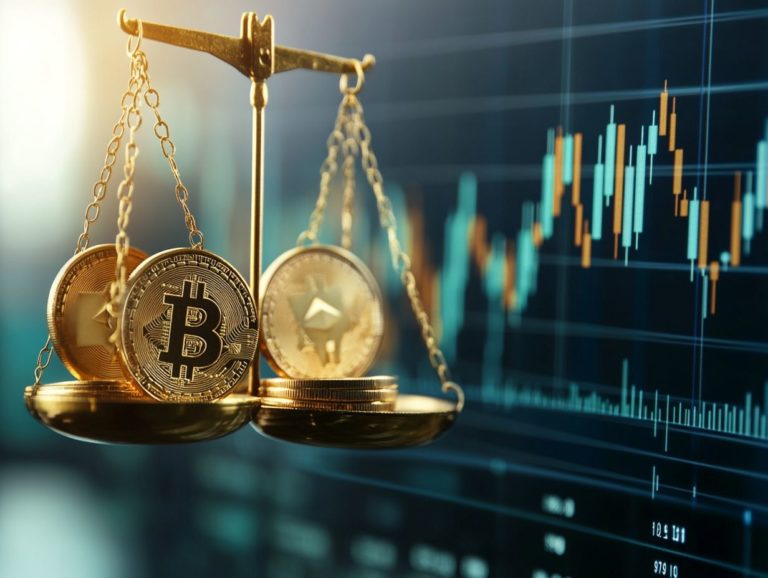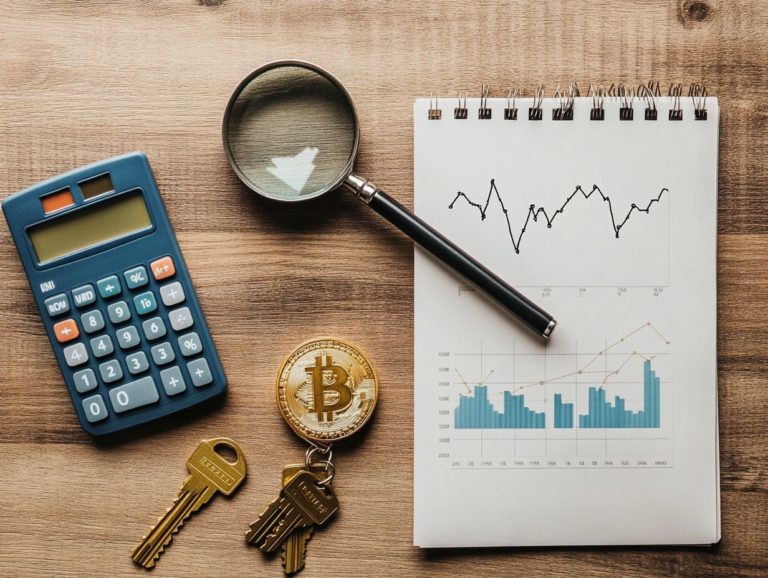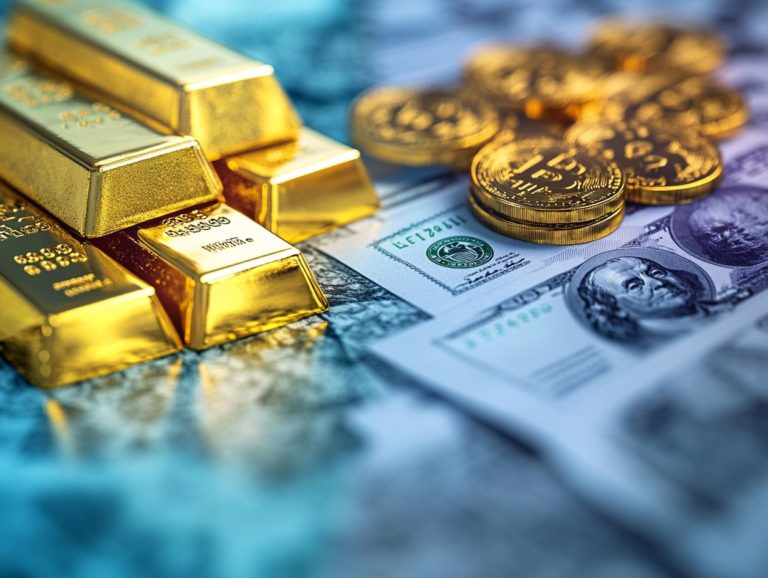Physical vs. Paper Silver: Which is Better?
Silver has captivated investors for centuries, whether in its tangible form or as a financial instrument.
This piece delves into the two primary avenues for investing in silver: physical silver and paper silver. You’ll discover the various forms that physical silver can take, along with the unique advantages and drawbacks associated with each.
We ll break down the types of paper silver available, comparing their pros and cons to give you a clearer picture. Investment strategies for both options will be explored, assisting you in determining which might be the best fit for your portfolio.
Embark on this journey through the world of silver investments and uncover what aligns best with your financial aspirations.
Contents
Key Takeaways:
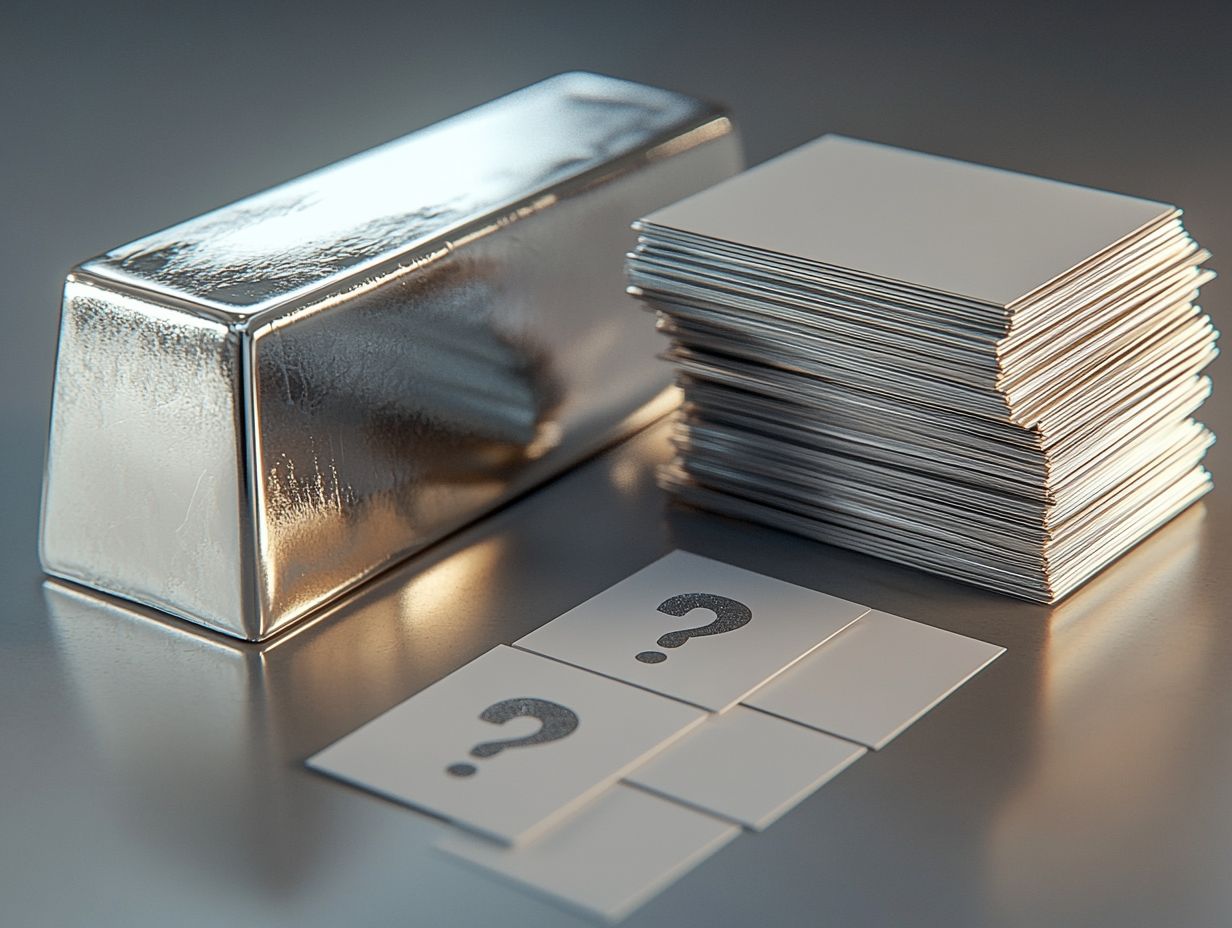
- Physical silver provides tangible ownership and security, while paper silver offers convenience and flexibility.
- Investors should consider factors such as storage, liquidity, and counterparty risk when choosing between physical and paper silver.
- A combination of both physical and paper silver can provide a well-rounded investment strategy, taking advantage of the pros of each approach while mitigating the cons.
Understanding Physical Silver
Get ready to unlock the secrets of physical silver it s crucial for savvy investors, especially during economic uncertainty.
Physical silver, typically in the form of bullion, offers a tangible asset that is easy to trade and simple to store. This makes it an attractive choice for those looking to safeguard their financial future.
By adopting a thoughtful approach to investing in physical silver, you can unlock substantial liquidity benefits and bolster your portfolio’s security when markets are unpredictable.
Forms of Physical Silver
Physical silver presents itself in various forms, including silver bullion and coins like the American Eagle and Canadian Maple. Each has unique characteristics and benefits.
You ll find that each type of silver possesses distinct attributes that cater to both collectors and investors. Silver bullion often stands out for its high purity and lower premiums over spot price, making it an efficient choice for long-term investors.
Conversely, coins tend to offer historical value and intrinsic beauty, which can capture the hearts of collectors. Market demand for silver forms varies with economic conditions, impacting their investment potential.
When storing physical silver, whether bullion or coins, be aware of associated costs; secure storage solutions and insurance can add up. It s essential to weigh these factors carefully as you navigate your investing journey.
Advantages and Disadvantages
Investing in physical silver presents a unique array of advantages and disadvantages, particularly regarding storage costs, liquidity benefits, and counterparty risk during economic downturns.
While the appeal of silver as a tangible asset is undeniable, you must navigate the often-turbulent waters of market volatility. Silver prices can swing dramatically due to factors such as economic trends and geopolitical events.
The potential returns might catch your eye if you’re looking to hedge against inflation or diversify your portfolio, but these market dynamics introduce significant risks.
The complexities involved in buying and selling can complicate your investment strategy. It’s crucial to think about your short-term and long-term goals before diving into the silver market.
Exploring Paper Silver
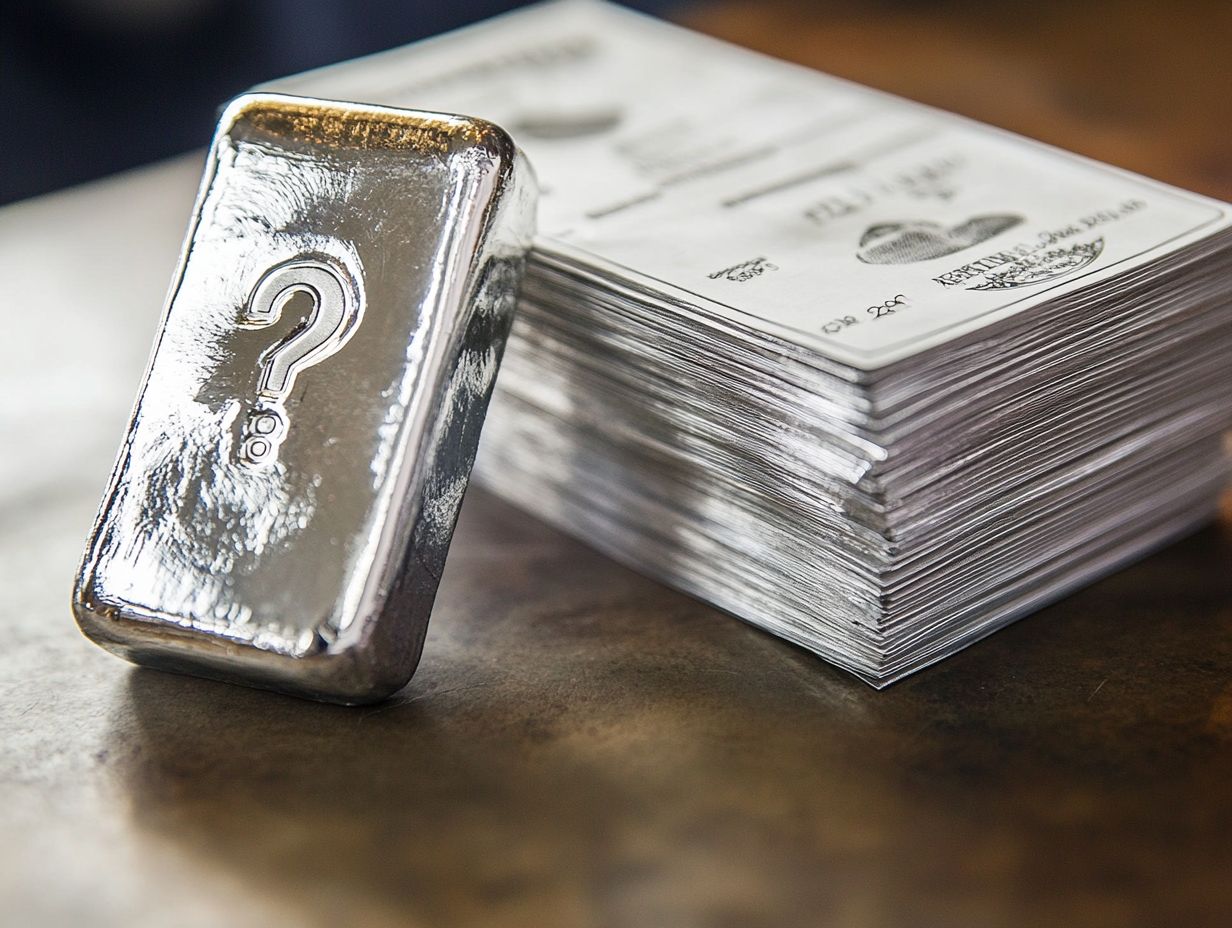
Exploring Paper Silver unveils a sophisticated approach to investing in silver, particularly through instruments such as Exchange-Traded Funds (ETFs), futures contracts, and various derivatives. Unlike physical silver, paper silver presents distinct liquidity advantages that can enhance your trading experience, especially in times of economic uncertainty.
However, it’s essential for you to grasp the counterparty risk tied to these financial instruments, enabling you to make informed and strategic investment decisions.
Types of Paper Silver
You ll find several types of paper silver available, including silver ETFs, futures contracts, Contracts for Difference, unallocated silver, and spread betting. Each option offers distinct advantages for traders and investors like yourself.
For example, silver ETFs provide an accessible way to tap into silver’s price movements without the hassle of owning the physical metal. Futures contracts, on the other hand, introduce leveraged trading, which means trading with borrowed money to increase potential gains, but it can amplify both your gains and losses.
If you re looking to speculate on price changes without actually owning silver, Contracts for Difference might catch your interest. Keep in mind, though, that they come with a higher risk due to their leverage.
Unallocated silver can be a cost-effective choice, but it introduces risk from the other party involved in the investment, which might not sit well with the more safety-conscious investors.
Then there’s spread betting, which offers high flexibility and generally allows you to sidestep stamp duty. However, it also carries significant risk. Each of these options presents its own unique risk-return profile, catering to a variety of investment strategies that align with different market conditions.
Pros and Cons
The pros and cons of paper silver investments primarily hinge on liquidity benefits and risk from the other party involved in the investment, factors that can significantly influence your trading strategies during market fluctuations.
On one hand, the ease of trading paper silver grants you the ability to swiftly buy and sell positions without the hassle of physical delivery. This allows for a more responsive approach to shifting market conditions. Lower storage costs make paper silver appealing, especially if you aim to keep overhead expenses at bay. However, understanding the differences in returns is crucial; for more insight, check out physical vs. paper: which has better returns?
On the other hand, it s essential not to overlook the inherent counterparty risks tied to these investments. The potential for default by the issuing entity could threaten your returns. Without physical ownership, you lack tangible assets, which can be particularly concerning during economic downturns when physical silver might serve as a reliable safe haven.
Navigating these complexities is vital for aligning your investment strategies with the broader economic landscape.
Comparison of Physical and Paper Silver
Understanding the comparison between physical and paper silver is vital for investors like you, as it reveals the strengths and weaknesses of each form in terms of liquidity benefits, counterparty risk, and market volatility.
Physical silver is appealing because it’s a tangible asset. It acts as a hedge against inflation and economic uncertainty. In contrast, paper silver provides you with liquidity and ease of trading, enabling a more diversified investment strategy.
It s essential for you to carefully weigh these options before diving into a decision.
Factors to Consider
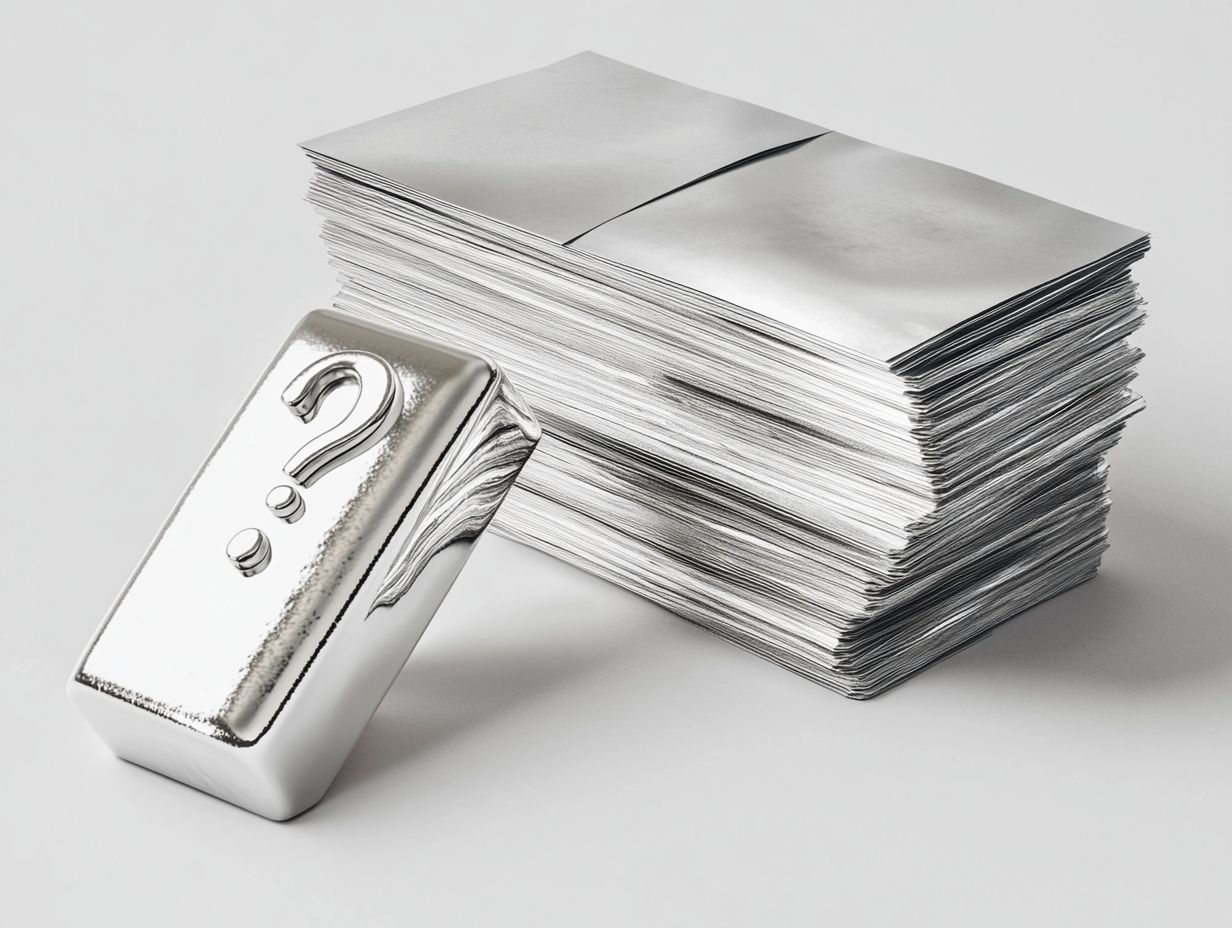
When you compare physical silver to paper silver, several factors come into play, including liquidity benefits, counterparty risk, and how market volatility can influence your investment decisions.
As you contemplate your options, it s essential to consider how your personal financial goals align with the type of silver you choose. If you re drawn to the idea of a tangible asset, physical silver might resonate more with you, offering the satisfaction of owning a hard commodity.
In contrast, if ease of transaction and lower storage costs are your priorities, you might find yourself gravitating toward paper silver, which can be traded effortlessly in the market.
During times of economic uncertainty, many individuals prioritize security, often turning to physical silver as a reliable hedge against inflation.
Moreover, diversification is a crucial aspect of your overall strategy; investing in both forms of silver could offer a balanced approach, helping to mitigate risks while maximizing potential gains.
Take time now to weigh your options, as this choice can shape your financial future.
Investment Strategies for Physical and Paper Silver
Investment strategies for both physical and paper silver are crucial for maximizing returns while minimizing risks in the ever-fluctuating silver market.
By gaining a deep understanding of the diverse financial instruments at your disposal such as silver ETFs and mining stocks you can adeptly maneuver through economic uncertainty. This knowledge gives you the power to leverage diversification, ultimately enhancing the security of your portfolio.
Pros and Cons of Each Approach
Investing in physical silver or paper silver has its own advantages and drawbacks. Understanding these differences is crucial for your investment success.
Physical silver is a tangible asset that can protect you against inflation and economic uncertainty. However, it requires storage and insurance, which can increase your costs.
Paper silver, like exchange-traded funds (ETFs) or futures contracts, offers greater liquidity. This is perfect for those who prefer quick transactions.
However, paper silver can involve counterparty risks where you depend on third parties to manage your assets. Balancing these factors will help you align your choice with your investment strategies and risk tolerance.
Frequently Asked Questions
What is the difference between physical and paper silver?
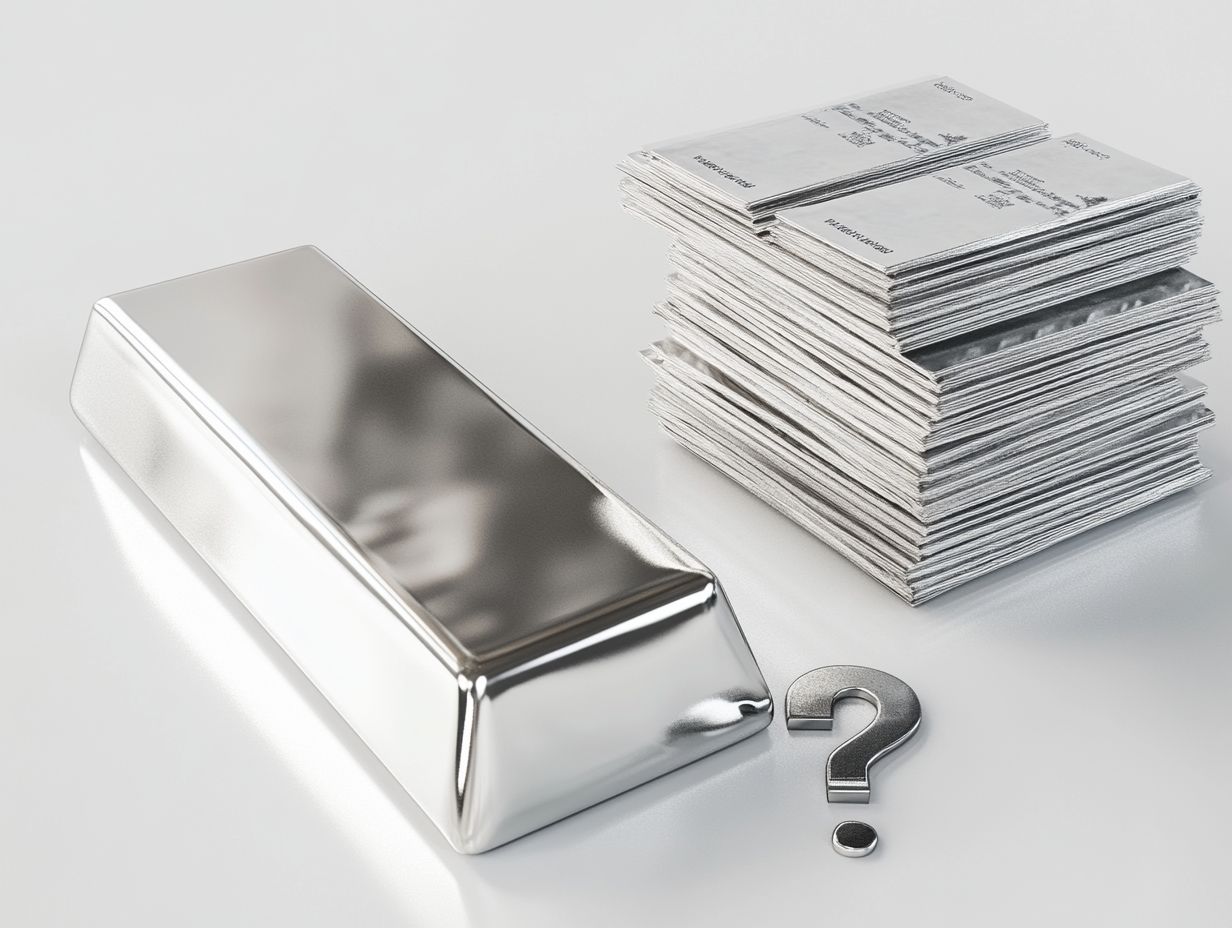
Physical silver includes actual metal like coins or bars. Paper silver involves financial instruments such as exchange-traded funds (ETFs) or stocks of mining companies.
Which is better: physical or paper silver?
Your choice depends on personal preferences and investment goals. Physical silver provides the security of direct ownership, while paper silver offers easier access and potential for higher gains.
What are the benefits of investing in physical silver?
Physical silver acts as a hedge against inflation and can serve as a store of value. It can also be bartered in uncertain economic times, giving a sense of security.
What risks come with paper silver?
Paper silver may face default risks and market volatility. Unlike physical silver, it lacks tangible security.
Can I convert my paper silver into physical silver?
Yes, many paper silver investments allow redemption for physical silver. However, it’s essential to check if your investment offers this option.
Which option usually has lower transaction costs?
Physical silver often has higher transaction costs due to dealer premiums. Paper silver might have lower costs but can include management fees, especially with ETFs.










